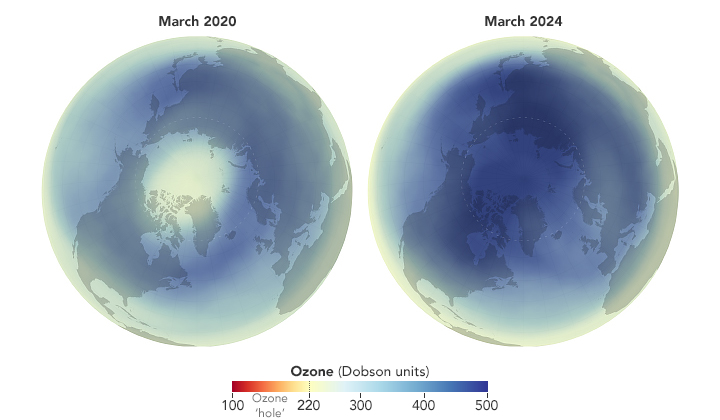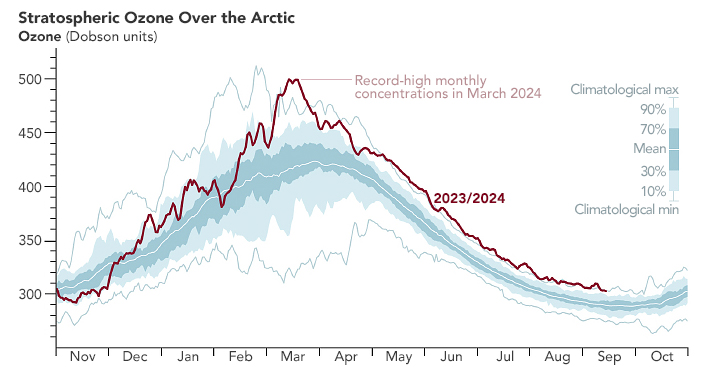In March 2024, ozone concentrations over the Arctic reached a record high monthly average. This is stated in a paper by a team of researchers from NASA and the University of Leeds, published in the latest issue of the journal Geophysical Research Letters.

According to the researchers, the cause of the record was a series of planetary-scale waves between December 2023 and March 2024. They spread upward through the atmosphere and slow the stratospheric jet stream circulating around the Arctic. When this happens, air from the mid-latitudes gathers toward the pole, sending ozone into the Arctic stratosphere. Another important factor was that there was very little ozone depletion from substances such as chlorine during this period.
The activity in March 2024 contrasts sharply with March 2020, when stratospheric ozone concentrations in the Arctic conversely reached extremely low levels. Then circumpolar winds prevented ozone from other latitudes to replenish the Arctic stratosphere. The polar vortex also created colder than average conditions favorable for the ozone-depleting reactions.
It is worth noting that the behavior of the ozone layer in the Arctic is very different from Antarctica. Ozone holes form over the icy continent every year. The ozone concentration over the Arctic is very variable and depends on the moods of tropospheric and stratospheric weather.

According to scientists, the current record doesn’t have any singular cause, rather it is a combination of factors. In addition to weather, the Montreal Protocol, signed in 1987, which banned the production of substances that deplete the ozone layer, also played a role. However, because chlorofluorocarbons (CFCs) persist in the atmosphere for decades, average Arctic ozone levels are not expected to return to 1980 levels until 2045. Increasing stratospheric greenhouse gas concentrations also accelerate ozone recovery.
An increase in stratospheric ozone has a positive effect on life on Earth. It reduces the amount of ultraviolet radiation reaching the surface of our planet. This means less damage to plant DNA and a lower risk of cataracts, skin cancer and immune system suppression in humans and animals.
Learn more about how the ozone layer protects the Earth from harmful radiation in our article.
According to Earthobservatory


